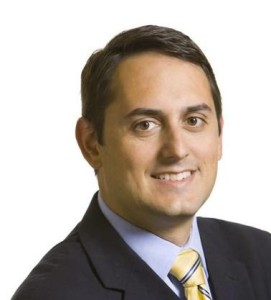The Right Note is a weekly opinion column. The views and opinions expressed in the column are those of the author and do not necessarily reflect the views of ARLnow.com.
A while back, I made brief mention of the County’s decision to take away a travel lane in each direction on Eads Street in Crystal City. While it certainly can be frustrating to wait an extra handful of minutes on Eads Street each day for those of us who live there, it sounds like Wilson Boulevard is even worse, with reports of adding 20 minutes or more to the commute.
The County said it anticipates traffic will improve on Wilson, but it is hard to imagine taking a lane of travel away during rush hour will ever improve traffic flow.
Cynically one might say Arlington County transportation policy is to make it so miserable to drive a car that more people will give up their cars for public transportation out of frustration. The County almost certainly also believes that creating dedicated bike lanes will encourage more bike usage. And no doubt, this is part of the “greening” of Arlington.
Unfortunately, Metro is an unreliable, expensive and often unpleasant experience. And the eye test on Eads says that increased bike use during rush hour is not happening so far.
The fact is most people are still driving their cars, just sitting in longer backups to do it. The result is more idling while backups occur. Idling means each driver will burn considerably more gasoline which adds cost to their monthly budget and puts more CO2 into the atmosphere. Instead of CO2 savings from bike usage, these decisions are actually going to end up being worse for the environment and our wallets.
Some drivers could also begin looking for alternate routes that will involve cutting through residential neighborhoods during heaviest traffic times. That means any small amount of safety for bikes gained along the main roads could be lost to pedestrians and bikes on residential streets.
Arlington continues to add density in its development. This new development here and in the surrounding communities is going to only increase traffic that must move through.
Yet, Arlington regularly adopts transportation policies that do not increase our ability to move this traffic through our roads efficiently. Arlington opposed the 395 HOT lanes and opposed measures to improve 66. Now, we are narrowing non-highway surface streets.
Of course, these decisions are brought to you by many of the same people who insisted that putting a fixed rail line down existing lanes of travel on Columbia Pike would make traffic flow better.
The County is putting a lot of time and effort into these so-called “Complete Streets” projects. As they are being rolled out, maybe it is time to re-evaluate whether or not this actually represents the best path forward.


